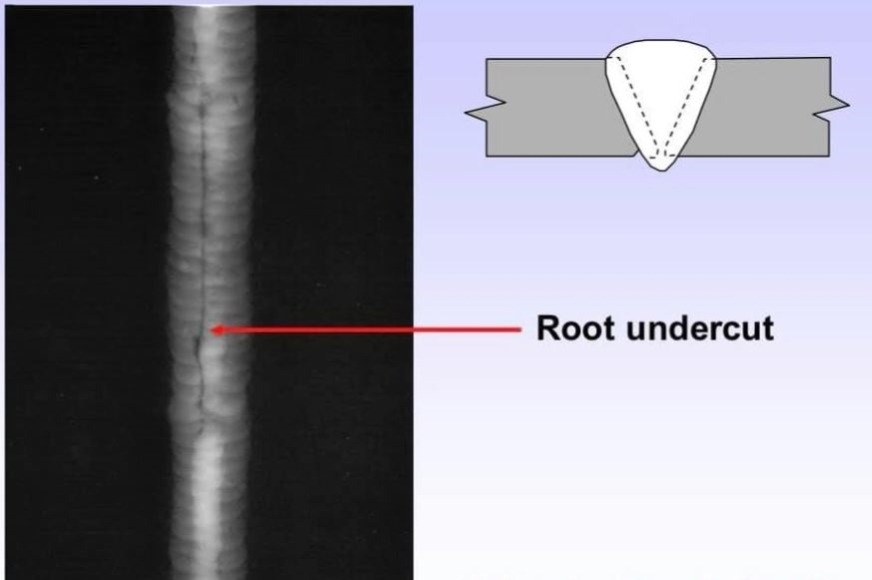Preventing Weld Undercut: Proven Techniques Every Welder Should Know
Preventing Weld Undercut: Proven Techniques Every Welder Should Know
Blog Article
Grasping the Art of Welding: Just How to Prevent Undercut Welding Issues for Flawless Manufacture Outcomes
By recognizing the root triggers of undercut welding and carrying out reliable techniques to avoid it, welders can elevate their craft to brand-new degrees of excellence. In the pursuit of perfect fabrication results, mastering the art of welding to stay clear of undercut concerns is not simply an ability yet a requirement for those aiming for perfection in their job.
Understanding Undercut Welding

To avoid undercut welding, welders ought to ensure proper welding specifications, such as readjusting the present, voltage, traveling rate, and preserving the correct electrode angle. In addition, making use of the ideal welding technique for the particular joint arrangement is necessary. Utilizing weaving movements or backstepping strategies can help make certain appropriate weld metal deposition and decrease the chance of undercut development. Regular evaluation of welds throughout and after the welding procedure is additionally vital to catch any kind of undercut early and make needed adjustments to stop additional problems. Preventing weld undercut. By understanding the reasons of undercut welding and implementing precautionary measures, welders can attain top notch, structurally audio welds.
Root Causes Of Undercut in Welding
Recognizing the aspects that add to undercut in welding is necessary for welders to produce top notch, structurally sound welds. Undercutting happens when the weld metal does not correctly fill up the groove developed in between the base metal and the formerly deposited weld steel. A number of aspects can result in damage in welding. One usual cause is extreme heat input. Welding at heats for prolonged periods can lead to the base steel thawing greater than preferred, bring about undercut. Insufficient welding current or incorrect welding rate can likewise add to undercut. Insufficient current may not provide adequate warmth to thaw the base and filler metals effectively, while extreme rate can stop proper combination, triggering undercut. Additionally, inappropriate electrode angles or wrong lantern control strategies can develop areas of low weld metal deposition, promoting undercut. Recognizing these causes and executing appropriate welding techniques can aid protect against undercutting concerns, guaranteeing strong and durable welds.
Strategies to avoid Undercutting

To minimize the threat of damaging in welding, welders can employ strategic welding techniques aimed at enhancing the high quality and stability of the weld joints. One efficient technique is to change the welding criteria, such as voltage, present, and take this content a trip speed, to guarantee appropriate heat input and deposition. Keeping an appropriate electrode angle and ensuring regular travel rate can additionally help prevent undercut. Additionally, utilizing the appropriate welding technique for the certain joint arrangement, such as weave or stringer beads, can add to decreasing undercutting. Preventing weld undercut.
Employing back-step welding strategies and managing the weld grain account can also aid distribute warm uniformly and reduce the danger of undercut. Routine evaluation of the weld joint during and after welding, as well as executing top quality assurance actions, can aid in finding and resolving damaging problems immediately.
Significance of Correct Welding Criteria
Selecting and keeping appropriate welding specifications is vital for attaining effective welds with marginal flaws. Welding specifications refer to variables such as voltage, current, travel rate, electrode angle, and securing gas flow rate that straight affect the welding process. These criteria have to be meticulously adjusted based on the sort of product being welded, its density, and the welding technique employed.
Appropriate welding criteria ensure the correct amount of heat is related to thaw the base metals and filler product consistently. If the parameters are set expensive, it can cause too much heat input, causing burn-through, spatter, or distortion. On the other hand, if the criteria are also low, incomplete fusion, absence of penetration, or undercutting may take place.
Quality Control in Welding Procedures

Conclusion
To conclude, mastering the art of welding requires a comprehensive understanding of undercut welding, its causes, and strategies to stop it. By making sure correct welding criteria and executing top quality guarantee techniques, flawless manufacture results can be accomplished. It is vital for welders to constantly aim for quality in their welding procedures to stay clear of undercut issues and create top notch welds.
Undercut welding, a common issue in welding procedures, takes place when the weld steel does not properly fill the groove and leaves a groove or depression along the bonded joint.To avoid undercut welding, welders must guarantee appropriate welding criteria, such as changing the present, voltage, traveling speed, and preserving the proper electrode angle. Poor welding incorrect or present welding speed can likewise contribute to undercut.To mitigate the danger of undercutting in welding, welders can utilize tactical welding methods intended at boosting the high quality and honesty of the dig this weld joints.In conclusion, grasping the art of welding needs a comprehensive understanding of undercut welding, its causes, and techniques to stop it.
Report this page